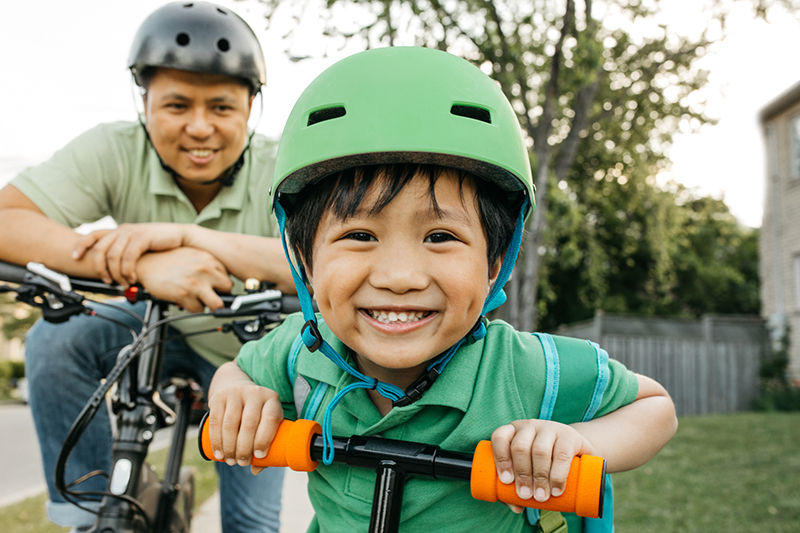Families For Life | Wheel Fun!

How do you keep your toddler active and happily engaged for an hour? What fun activity of minimal fuss and planning can you and your child do? Try tricycle riding outdoors.
Teaching your child how to ride a tricycle and making it regular activity, subtly introduces the importance of physical fitness and starts off some interest in an active lifestyle. Inactive, sedentary children after all, usually do not have average fitness levels in later life. So get your child onto that tricycle and pedal off to a nearby park or playground.
Do remember to closely supervise and make sure your child wears a safety helmet when riding.
Choosing a tricycle
There is no shortage of tricycle models options if you are shopping for one at the stores. Pick an age-appropriate one.
One-year-olds can start with a low-to-the-ground push trike model that requires pushing or walking with the feet. Models featuring push handles at the back allow parents to help their child manoeuvre.
It also is a good idea to invest in one that is suitable for a child 1 to 4 years old. Features to look out for include back support, adjustable seat, non-slip pedals, sturdy steering, shock absorbers and safety hand-grips.
Of course, make sure it is in your child's favourite colour and check that your child’s feet can reach the pedals or ground.
Do not forget the safety helmet!
Benefits of riding a tricycle
Mastering a tricycle is a developmental milestone for children who should, in most cases, be able to ride one by the age of three.
Riding a tricycle builds muscle strength, endurance and stamina. It also builds both fine and gross motor skills through balance, coordination, and steering practice.
After tricycle mastery comes the bicycle, which will again require good motor skills and coordination, but at a higher level.
Safety and establishing boundaries
Make sure your child wears a safety helmet when riding. A helmet not only offers protection of the head, the act of putting it on and securing it in place establishes a good habit for safety.
Also, explain where the boundaries are when riding in the open. Show your child where not to ride and stay watchful anyway to be quick to respond if your child gets into trouble.
When your child is spent after riding, ask him or her if riding was fun. Do this to associate fun with exercise because it is important for your child to make that connection.
Explore more
Contributed by:
Early Childhood Development Agency